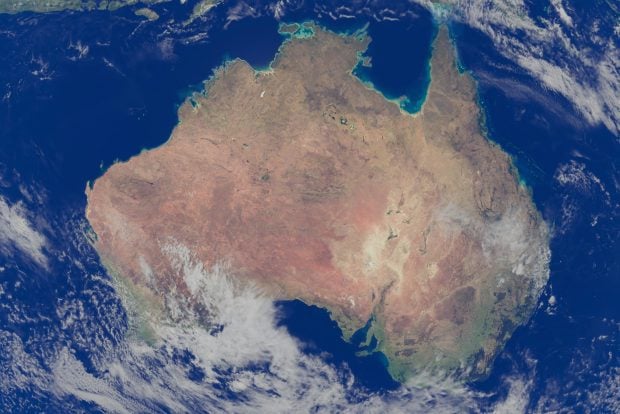Australia to reduce emissions by at least 62%, in latest NDC

Australia has pledged to cut its greenhouse gas emissions by between 62% and 70% of 2005 levels by 2035.
The new target falls just short of the 65% to 75% range modelled by the country’s treasury department and proposed by the independent Climate Change Authority, but is the country’s most ambitious climate target to date.
The emission reduction targets set by countries are known as nationally-determined contributions, or NDCs, and are a cornerstone of the Paris Agreement. Australia is the latest country to release its 2035 target ahead of COP30, which will take place in Brazil in November.
The country’s 2035 NDC was announced by prime minister Anthony Albanese, treasurer Jim Chalmers and minister for climate change and energy Chris Bowden on 18 September.
“This is an ambitious but achievable target – sending the right investment signal, responding to the science and delivered with a practical plan. It builds on what we know are the lowest cost actions we can deliver over the next decade while leaving room for new technologies to take things up a gear,” they said in a statement.
Read more: Countries have a legal obligation to tackle climate change, International Court of Justice rules
The government has identified five priority areas that will help it achieve its pledge. These are:
- Driving clean energy across the economy through increased renewable energy generation – supported by new transition and storage, including household batteries.
- Lowering emissions by electrification and efficiency, including through supporting consumers to switch to electric vehicles.
- Expanding clean fuel use by establishing a low carbon liquid fuels industry and supporting green hydrogen.
- Accelerating new technologies, though Future Made in Australia investments, and innovation support through the Australian Renewable Energy Agency.
- And scaling up net carbon removals by enabling land holders to earn money for eligible carbon storage and a “robust” Australian Carbon Credit Unit scheme.
To help meet the target, the government has also announced new investments, including a A$5bn (US$3.3bn) Net Zero Fund to help industrial facilities decarbonise and to scale up more renewables and low emissions manufacturing; A$2bn (US$1.3bn) for the Clean Energy Finance Corporation “to continue to drive downwards pressure on electricity prices”; and A$1.1bn (US$725m) to encourage greater production of clean fuels.
A further A$85m (US$56m) will go towards frameworks and tools to help households and businesses understand and improve their energy performance.
Read more: COP30 president calls for ‘global NDC’ to spur collective action on climate change
Climate risks: ‘cascading, compounding and concurrent’
There has been much anticipation ahead of the announcement of the country’s 2035 NDC, given its heavy reliance on fossil fuels – Australia is one of the world’s biggest polluters per capita – and its proximity to Pacific Island nations, which are among the most vulnerable to climate change.
The release of the NDC follows a report into the impact of climate change in Australia. The first National Climate Risk Assessment, published on 15 September, found that Australia had already reached warming of above 1.5C and that no community would be immune from “cascading, compounding and concurrent” climate risks.
It warned that if the government failed to take stronger action there would be more heatwave-related deaths, poorer water quality due to severe flooding and bushfires, and sea level rises that would threaten 1.5 million people. It also warned of a A$611bn (US$402bn) drop in property values as a result of such threats.
In their joint statement, Albanese, Chalmers and Bowden said the latest NDC was “the right target to protect our environment and secure our prosperity and to create jobs and economic growth for our nation”.
They added that the government’s “sensible, practical approach” would mean Australia’s exporters, farmers and key industries would “be able to compete and succeed in the world and our environment will be safe for future generations”.
They said the 62% to 70% range “balances what the Commonwealth can achieve with existing policies and technologies, and what the country could achieve with a whole-of-economy and whole-of-society effort”.
“A range enables greater ambition, recognising how quickly technology can change and the potential for even greater emissions reduction in the next decade.”
The current Labor government had previously pledged to reduce greenhouse gases by 43% by 2030. Previous conservative governments had set a target to reduce emissions by between 26% and 28% by 2030.
Climate activists and experts say Australia needs to slash emissions by at least 76% from 2005 levels to keep global temperatures from rising more than 1.5C higher than pre-industrial levels.
Modelling by academics at the Climateworks Centre, based at Monash University in Melbourne, suggests an emissions reduction of up to 85% is achievable.
Read more: Plastic pollution treaty fails as countries remain divided
Countries under pressure as COP30 draws nearer
According to the UN secretary general’s office, as of 18 September, only 36 countries had submitted their climate plans of the 194 Paris Agreement signatories.
Countries are under pressure to release their NDCs this month, ahead of COP30 in November. The original deadline had been February 2025.
Among major economies, the UK has declared the most ambitious emissions target so far – an effective 78% reduction from 2005 levels.
The UN Climate Summit is taking place this week, on 24 September, in New York and is expected to have at least 100 countries in attendance, including 40 heads of state.
Read more: EU and China pledge to strengthen climate cooperation




















